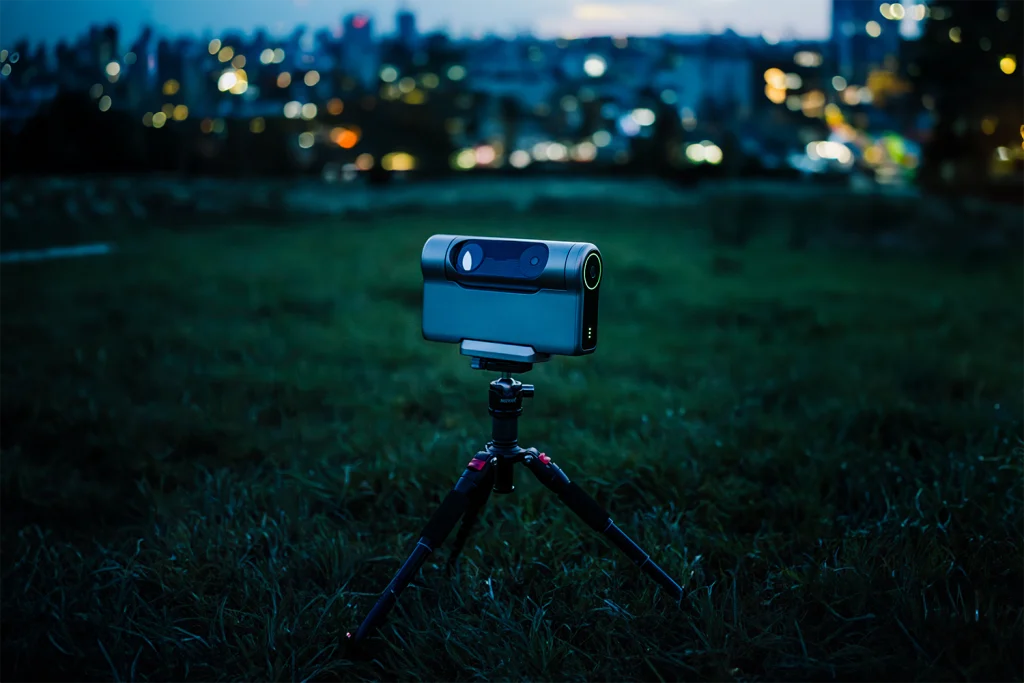Among the array of smart telescopes that forego traditional eyepieces, most retain a familiar telescope appearance, though some, like the Vespera telescope, evoke a resemblance to the turrets from the game Portal. However, the $460 Dwarf II Smart Telescope introduced a novel rectangular design that challenged the conventional conical shape associated with telescopes. Now, Dwarflabs is set to unveil the Dwarf III, which, while slightly larger than its predecessor, promises significantly enhanced long-distance imaging. This upgrade is attributed to a superior lens and advanced photography support for both day and night observations.
High-end smart telescopes typically command a hefty price tag, often running into thousands of dollars even without an eyepiece. For instance, Unistellar’s Odyssey, priced at $2,300, boasts automatic celestial object tracking, though it’s still cheaper than the eQuinox 2 from 2023, which costs $2,500. In contrast, the Dwarf series offers a more compact and economical alternative with its walkman-sized body and rotating lenses equipped with a 35mm aperture. These devices are designed for ease of use, featuring auto-focus capabilities and modes that automatically locate celestial objects like nebulae, star clusters, or planets via a dedicated app.

Priced at $500, the Dwarf III builds upon the successes of the Dwarf II, now capable of capturing wide-angle videos and images that are optimized for daytime use. Previously, the smart telescope could deliver impressive 4K imagery of celestial phenomena, but the Dwarf III enhances this capability by incorporating AI tracking, which allows it to photograph moving wildlife, such as birds, in addition to stars and planets.
In terms of technical specifications, the Dwarf III represents a notable upgrade over the Dwarf II. It features the newer Sony IMX678 8.86 mm sensor from 2024 and boasts a 150mm telephoto lens, an improvement from the Dwarf II’s 100mm lens. Although the wide-angle lens has slightly reduced in size from 6.8 mm to 6.7 mm, Dwarflabs claims that the Dwarf III can achieve imaging equivalent to a 737 mm telephoto lens. The telescope now supports Astro and dual-band filters, as well as VIS, enhancing the clarity of night sky observations, while the wide-angle lens remains ideal for terrestrial targets.
The Dwarf III also excels in video recording, with enhanced capabilities compared to its predecessor. It can now capture 4K video at 30 frames per second (FPS) and 1080p video at 60 FPS through its telephoto lens, an improvement over the Dwarf II’s maximum of 25 FPS and 30 FPS at these resolutions. The wide-angle lens has been upgraded to record 1080p video at 30 FPS. While it continues to provide telephoto images at 3840 x 2160 resolution, the wide-angle lens now delivers images at 1920 x 1080 resolution. Though these specifications may not match dedicated devices, they are well-suited for outdoor activities like hiking, where users might capture wildlife or sunset scenes as they prepare for nighttime photography.
For those who venture outdoors, the Dwarf III offers the advantage of a robust 10,000 mAh battery, nearly double the capacity of the Dwarf II’s 5600 mAh replaceable battery. The new battery is built-in, requiring users to carry a power bank if the charge runs low, eliminating the need for purchasing an additional battery pack. Additionally, the Dwarf III now includes 128 GB of onboard storage, compared to the previous model’s 64 GB micro SD card.

While the Dwarf III’s compact size is advantageous for photography, users interested solely in stargazing might consider alternatives like the $800 Unistellar Envision, which lacks photographic capabilities but offers a different form factor. The Dwarf II was notably enhanced with an ECH filter for reducing ambient light and a solar filter for capturing solar images, available only with the deluxe edition. It remains unclear whether these filters will be available for the Dwarf III or if they are compatible with the new model.
In summary, the Dwarf III builds upon the foundation laid by the Dwarf II, introducing improvements in lens technology, imaging capabilities, and battery life. Its enhanced features make it a compelling option for both amateur astronomers and wildlife enthusiasts seeking a versatile, compact smart telescope.
The advancements in the Dwarf III reflect Dwarflabs’ commitment to refining their technology and addressing user needs. With its enhanced optical performance and expanded functionality, the Dwarf III positions itself as a robust choice for capturing both celestial and terrestrial imagery, offering a valuable tool for those who enjoy exploring the night sky and the natural world.



 Viesearch - The Human-curated Search Engine
Blogarama - Blog Directory
Web Directory gma
Directory Master
http://tech.ellysdirectory.com
8e3055d3-6131-49a1-9717-82ccecc4bb7a
Viesearch - The Human-curated Search Engine
Blogarama - Blog Directory
Web Directory gma
Directory Master
http://tech.ellysdirectory.com
8e3055d3-6131-49a1-9717-82ccecc4bb7a